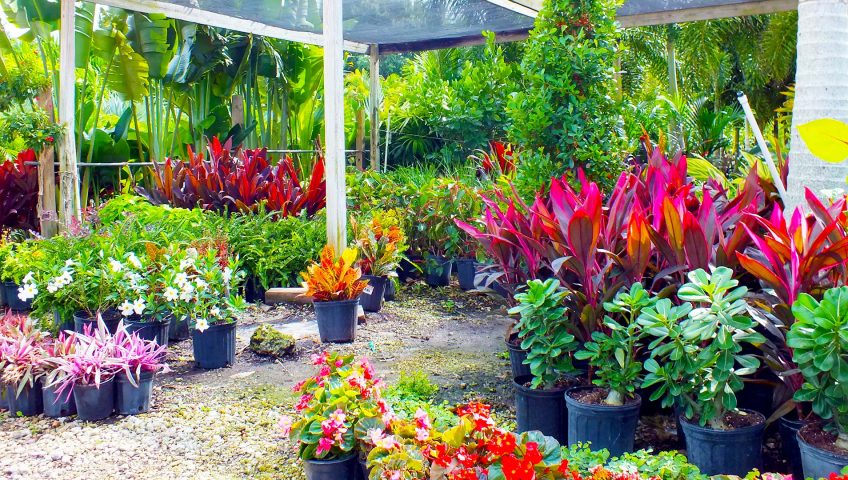our friendly Planet Natural Blogger
, in anticipation of the season that may have already arrived, has been going through Jim Fox’s excellent 2013 book How To Buy the Right Plants, Tools & Garden Supplies (Timber Press), particularly the chapters on choosing healthy nursery plants. Seems with recent life complications — we all have them, from health to weather to a family move — a lot of people didn’t get their vegetables started at home this year.
That’s okay. There’s actually still time to start even tomatoes and pepper seedlings indoors if you can supply the perfect conditions to encourage growth. But there’s an easier way: buy plants from a reputable nursery.
Let’s get one thing clear: we always prefer growing our own garden starts to buying them. But the good new is, if you must buy seedlings, the options for finding healthy, regionally appropriate, and organic garden starts are growing. Rather than being forced out of business by “garden centers” and big box stores, small, local nurseries seem to be thriving. The major reason for that is the booming interest in gardening, especially natural and organic gardening.
Made from the finest Norwegian seaweed, Dr. Earth® Kelp Meal contains over 70 minerals, micronutrients, amino acids and vitamins. Perfect for vegetable gardens, especially for supplying trace minerals to crops that will be consumed. Use 1/4 cup per 10 square feet during soil preparation.
Another indication is the number of mail-order outlets offering organic vegetable and flower starts.
The chapter “Where To Buy Plants” in Fox’s book is instructive. He makes a distinction between “nurseries,” who by definition sell plants that they grow, and “garden centers” which may grow some of the plants they sell or get them all off the truck. Fox points out that what are really garden centers often take the name “nursery,” even if they don’t grow the starts themselves. One thing he’s says is true of both these places dedicated to providing garden starts: “staff members know the plants intimately.”
Big box stores? Don’t even ask. Fox says that it should be remembered that the garden center section of a big box store represents only a small portion of the business’ overall revenue. Plants, often sold at a loss, are there to attract customers who will spend money on fertilizer, garden tools, and the like.
Fox has another chapter — “How To Read a Plant Tag or Catalog Description” — that’s a great guide to knowing exactly what you’re getting. This is mostly basic stuff about how to assure you’ll get the right color on a plant yet to bloom and that its size (or spreading potential for, say, pumpkins and winter squash). But there’s also a list of “Words That Might Be Red Flags,” words like “vigorous” and “spreading” that may indicate the plant’s weed-like ability to take over, or “difficult” that may suggest more work (and possibly heart-break) than you’re looking for.
All gardeners know a healthy plant when they see one. That’s the criteria to use when choosing individual plants. If you’ve chosen a reputable grower, nursery, or supplier, your job should be easier. Look for full healthy growth, avoid spindly, leggy plants (those that have grown long and skinny in search of light), and make sure the plants aren’t root-bound in their pots.
Plants that are growing several to a pot can be gently separated to a point. If their roots are significantly tangled, there will be significant damage and set back trying to separate them. Best to avoid these multiple starts all together.
Many plants from large commercial nurseries are treated with plant growth regulators
or PRGs. PRGs are applied to nursery plants to preserve or encourage certain traits that help make plants more marketable. This might include bloom-holding capabilities on flowers or growth-stunters that would keep tomatoes, peppers, and the like from growing leggy while awaiting sale. (It’s never a good idea to interrupt a plant’s natural tendency to grow.)
The health risks to humans from PRGs are unknown but traces of it have been found on fruits and other produce meant for consumption.
There are risks to your garden associated with poorly raised and maintained transplants. Bringing in poor quality, mass-produced flower and vegetable starts may introduce disease and pests (root aphids!) that travel in the soil.
Having a relationship with the folks at your local nursery is a plus. You can ask them what problems they might have had, if any. And they aren’t going to knowingly sell you diseased plants or bad soil. It’s not good business. The big box garden retailers? They wouldn’t even know if there was a problem.
Buying plants locally means they’re already adapted to your local growing conditions. Commercial starts raised who knows where will adapt once transplanted — such is the hardiness of nature — but not as readily. Mass marketers tend to sell strains that are widely adapted, plants able to do reasonably well in different growing regions. Yet there’s always the chance that the particular kind of tomato plant you’re buying is hardly suited for your area at all.
Here’s a brief primer on selecting both starts and seeds, with a bonus bit on saving seed, from Clemson University Cooperative Extension. Fingers crossed: Next year we’ll have the time to start our own seeds at home, maybe some heirlooms, seeds we’ve saved from our own garden. This year, we’re going to our local nursery.

